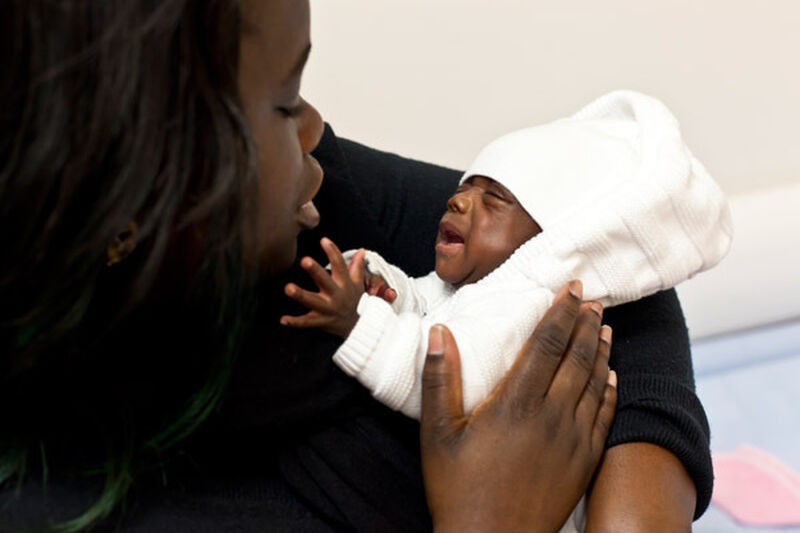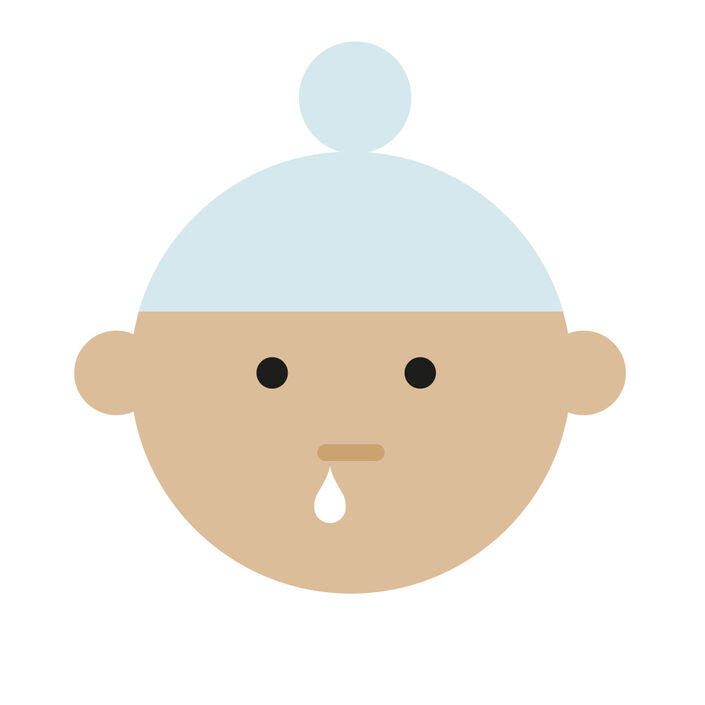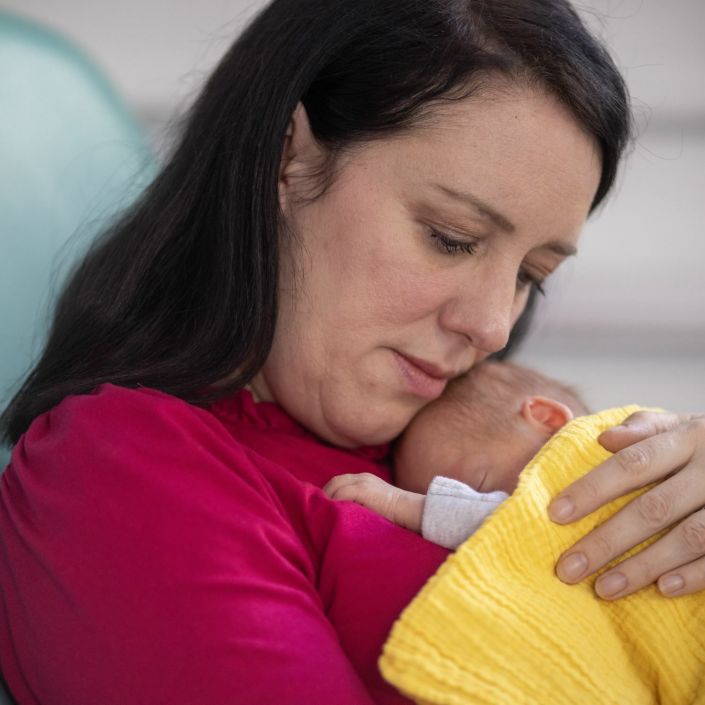You should seek emergency medical advice or call 999 if:
- Your baby is feeding poorly, and their nappies are less wet than usual.
- Your baby is finding it difficult to breathe. You may notice this if your baby grunts or you may be able to see the muscles under their chest sucking in.
- Your baby has long pauses in breathing (apnoea).
- Your baby’s skin, lips or tongue turns pale or blue.
Do not delay getting help if you have concerns. You know your baby or child best.
What will happen if my baby has to go to hospital?
Some babies with bronchiolitis need to be admitted to hospital. If this happens, your baby may firstly be admitted to the paediatric ward.
Doctors will measure how much oxygen is in your baby’s blood (oxygen saturation). If your baby’s oxygen saturation levels are lower than expected, your baby may need extra oxygen to help with their breathing. They may also need some support with tube feeding if they are too breathless to feed normally.
When your baby’s oxygen saturation levels improve and they are feeding well, they will be able to go home. Staff on the unit will talk to you about any symptoms you should be aware of at home and how to get help.
If your baby’s symptoms get worse, they may be admitted to the paediatric intensive care unit (PICU).
We have listed some of the treatments your baby might need in hospital below. If you are unsure about any part of your baby’s treatment or care, speak to the doctors and nurses looking after your baby.
Oxygen
Some babies will need to be given oxygen. This will help to improve the low levels of oxygen in your baby’s blood. Oxygen is usually given through nasal cannulas, which are small soft tubes that are placed in your baby’s nostrils.
Feeding support
If your baby is unable to feed by mouth, doctors may pass a tube into your baby’s nose or mouth to their stomach so they are able to feed. This is called tube feeding. Some babies will also need fluids given through a vein (intravenously).
Continuous positive airway pressure (CPAP)
Continuous positive airway pressure (often shortened to CPAP) is a type of respiratory (breathing) support.
It passes air with or without oxygen (depending on what your baby needs) through two thin tubes in your baby’s nose, or through a small mask that fits over their nose. CPAP slightly raises the pressure of the air and oxygen given, which helps keep your baby’s lungs inflated. This makes it easier for them to breathe. During CPAP, your baby breathes on their own.
Mechanical ventilators
Mechanical ventilators are machines that do the breathing for your baby if they are unable to breathe on their own.
They blow air with or without oxygen (depending on what your baby needs) gently into your baby’s lungs. This is done through a tube that is passed through your baby’s nose or mouth (called an endotracheal tube) into their trachea (windpipe).
If your baby is at a higher risk of severe illness from RSV, your GP may offer them the palivizumab (Synagis) injection to reduce this risk. Palivizumab is usually given as an injection into the thigh, once a month for a maximum of five months.
If your baby is in the neonatal unit and they are at a high risk of severe illness from RSV, the staff on the neonatal unit may talk to you before your baby goes home about having the palivizumab injection. This is more likely if your baby is going home during the RSV season (October to March).
If your baby is already at home, palivizumab is likely to be given in the hospital outpatient department. If you are not sure whether your baby can have a palivizumab injection, speak to staff on the neonatal unit or your GP.
RSV can pass easily between people through hand contact or in droplets produced by coughing or sneezing. To reduce the risk of your baby getting RSV and to prevent RSV spreading, you should:
- Wash your hands regularly before and after touching your baby.
- Reduce your baby’s exposure to crowded places and public transport in the winter months.
- Not smoke or allow anyone else to smoke around your baby.
- Not allow adults and children with cold or flu symptoms to touch your baby.
We have more information about how to avoid infections.
You may notice that your baby continues to wheeze and cough for a few months after they have had bronchiolitis. This is common.
If your baby has had treatment in hospital for bronchiolitis, they may have follow-up appointments to monitor their progress.
It is possible for your baby to get bronchiolitis again after they have already had it once. You can reduce the risk of this happening by following the steps above to prevent infection.
Having a baby in intensive or special care can be a stressful experience. Having a baby who is unwell can make you feel out of control of your situation.
How you feel and cope with what has happened to you might be different to others who face these challenges. We have some information about how you might be feeling and the different types of support available.
If you are unsure about any part of your baby’s diagnosis, treatment or care, the staff on the ward will help you in any way they can. It is okay to ask again if you need information repeated or made clearer. The team will understand and want to support you.
We have included some links to charities and organisations who can provide more support. If you need someone to talk to, you can also contact us on [email protected] or arrange a video call with one of our volunteers.
- Asthma + Lung UK (formerly Asthma UK and British Lung Foundation) – Provides support to anyone affected by a lung condition, through online and printed information, support groups, a web community, and a support line.
- NHS Choices – Provides more information about bronchiolitis, symptoms, treatment and prevention. Visit nhs.uk/conditions/bronchiolitis



